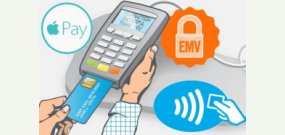Retail Stock Ledger
This single sheet of paper can give you comparatives on vendors, items, classes, and departments.
Who gives you the best turn rates and sell-thrus, Vendor A or Vendor B? Knowledge to make smart business decisions.
The typical retailer is overstocked by 10-25% at any given point in time, meaning that for every $100,000 in sales, there can be $5,000 to $25,000 (at retail) in excess inventory on the shelves. When you start looking at $500,000 in sales, the wasted investment starts running into six figures. I wonder what a retailer would do if they converted $100,000 of excess inventory into cash?
The Retail Stock Ledger provides you with the following formulas and calculations:
- UNITS = Item Count
- RETAIL = UNITS x Retail Price
- COST = UNITS x Cost of Merchandise
- OPENING INVENTORY at Retail or Cost = ENDING INVENTORY from last EOM Processing
- PURCHASES at Retail = (UNITS Purchased x Retail Price) – (UNITS Returned x Retail Price)
- PURCHASE PRICE VARIANCE = COST of item on Vendor Invoice – COST of item on Receiving Ticket
- PURCHASES at Cost = (UNITS Purchased x Cost) – (UNITS Returned x Cost) + PURCHASE PRICE VARIANCE this Month
- SURCHARGES (always Retail) = Amount added to a Receipt Line on Sales and Returns
- ADDITIONAL MARKUPS (always Retail) = Price Increases to Inventory On-Hand + Price Increases at POS + SURCHARGES
- NET TRANSFERS at Retail or Cost = Inventory Transfer Out + Inventory Transfer In
- AVAILABLE INVENTORY at Retail = OPENING INVENTORY at Retail + PURCHASES at Retail + ADDITIONAL MARKUPS + NET TRANSFERS at Retail
- AVAILABLE INVENTORY at Cost = OPENING INVENTORY at Cost + PURCHASES at Cost + NET TRANSFERS at Cost
- SALES (always Retail) = (UNITS Sold x Retail Price) – (UNITS Returned x Retail Price)
- COST OF SALES (always Cost) = (UNITS Sold x Cost) – (UNITS Returned x Cost)
- MARKDOWNS (always Retail) = Price Decreases to Inventory On-Hand + Price Decreases at POS
- DISCOUNTS (always Retail) = Amount deducted from Receipt Line on Sales and Returns
- INVENTORY ADJUSTMENTS at Retail or Cost = Value of Inventory Quantity Increases and Decreases from Modules/System Manager/Adjust Inventory
- ENDING INVENTORY at Retail = AVAILABLE INVENTORY at Retail – SALES – DISCOUNTS – MARKDOWNS + INVENTORY ADJUSTMENTS at Cost
- ENDING INVENTORY at Cost = AVAILABLE INVENTORY at Cost – COST OF SALES + INVENTORY ADJUSTMENTS at Cost
- STORE % = SALES / Total Sales on the Report
- IMU % = (PURCHASES at Retail – PURCHASES at Cost ) / PURCHASES at Retail
- CURRENT MARKUP % = (ENDING INVENTORY at Retail – ENDING INVENTORY at Cost) / ENDING INVENTORY at Retail
- ACTUAL GROSS PROFIT $ = ( SALES – DISCOUNTS ) – COST OF SALES
- ACTUAL GROSS PROFIT % = ( ( SALES – DISCOUNTS ) – COST OF SALES ) / ( SALES – Discounts )
- PERFORMANCE GROSS PROFIT $ = SALES – COST OF SALES
- PERFORMANCE GROSS PROFIT % = ( SALES – COST OF SALES ) / SALES
- TURN RATE = Annual SALES / Average OPENING INVENTORY
- SELL-THRU (Units) = UNITS SOLD / ( OPENING INVENTORY + PURCHASES + NET TRANSFERS in units )
- MARKDOWN % = MARKDOWNS / SALES
- SHRINKAGE % = INVENTORY ADJUSTMENTS at Retail/ SALES
- STOCK/SALES = ENDING INVENTORY at Retail / SALES




